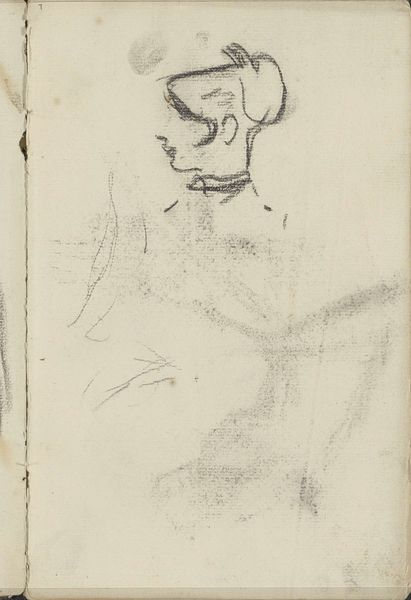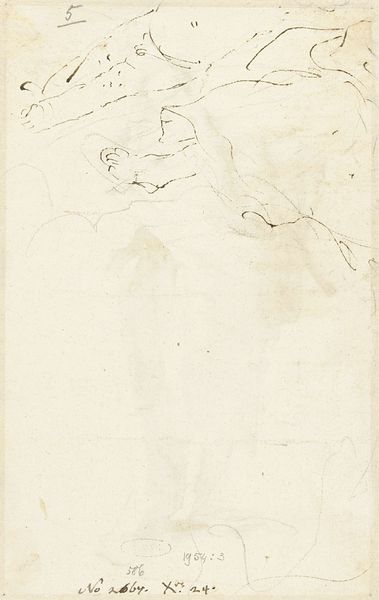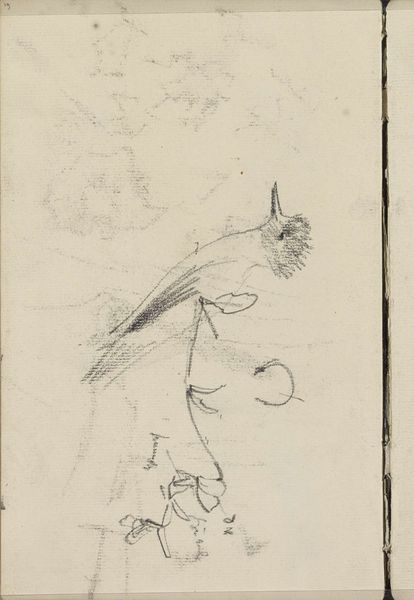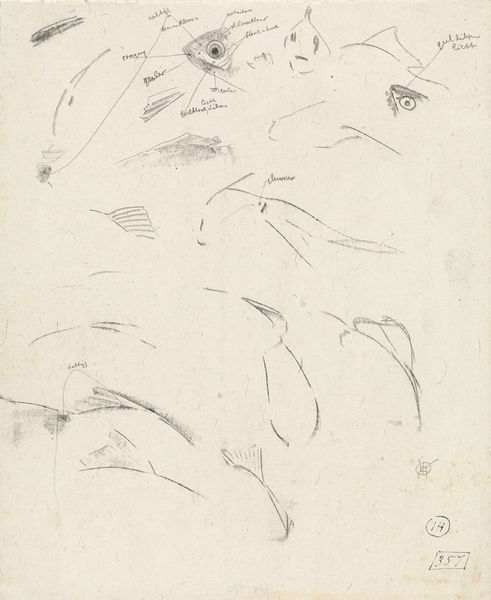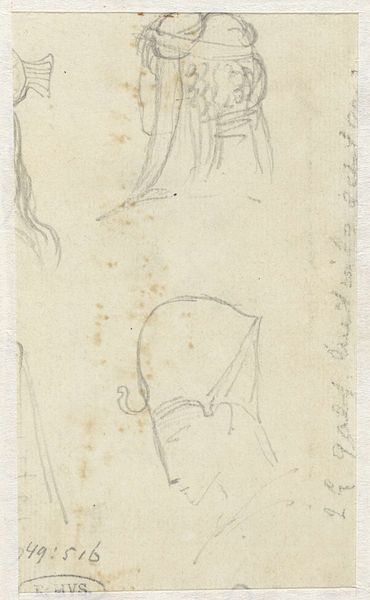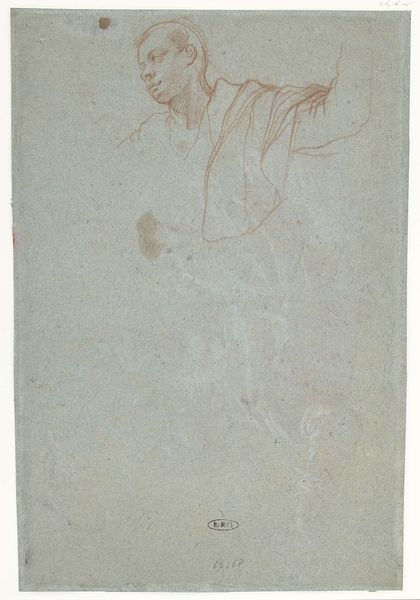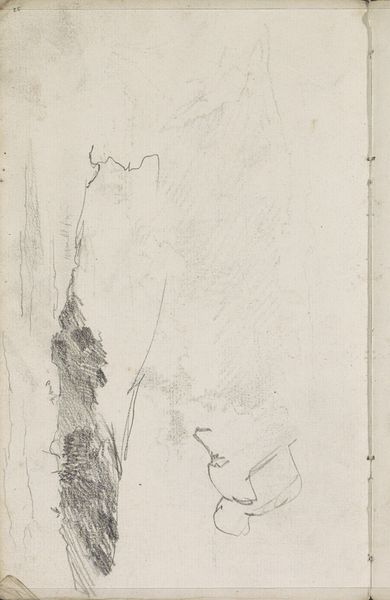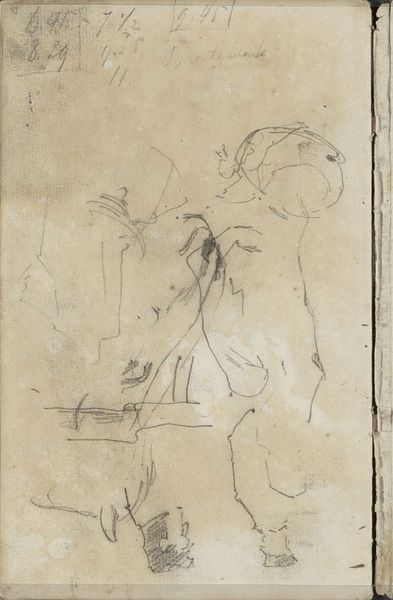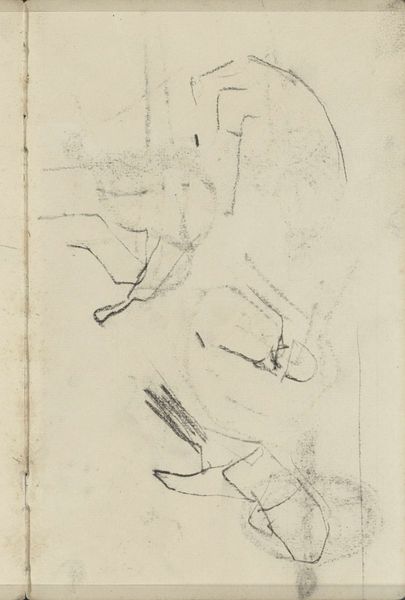
drawing, paper, pencil
#
drawing
#
dutch-golden-age
#
pencil sketch
#
figuration
#
paper
#
pencil
Dimensions: height 141 mm, width 79 mm
Copyright: Rijks Museum: Open Domain
Harmen ter Borch sketched this study of a running man, sometime in the 17th century, using graphite on paper. The material itself - graphite - is key to understanding the character of the drawing. Graphite, a form of carbon, leaves a delicate trace on the page, and here, Ter Borch exploits this quality to the fullest. Look closely, and you'll see that he's built up the figure with a series of light, almost tentative lines. This gives the sketch a sense of movement and immediacy, as if the artist were capturing the figure in fleeting motion. The simplicity of the materials – graphite and paper – also speaks to the function of the drawing as a study. It's a quick, efficient way for the artist to work out ideas about posture, composition, and form. Graphite, in particular, has been crucial to the rise of modern industry and mass production, from technical drawings to the humble pencil. So, next time you see a drawing, remember that the materials and processes used in its making are just as important as the image itself. They offer a glimpse into the artist's working method and the broader cultural context in which the work was created.
Comments
No comments
Be the first to comment and join the conversation on the ultimate creative platform.

